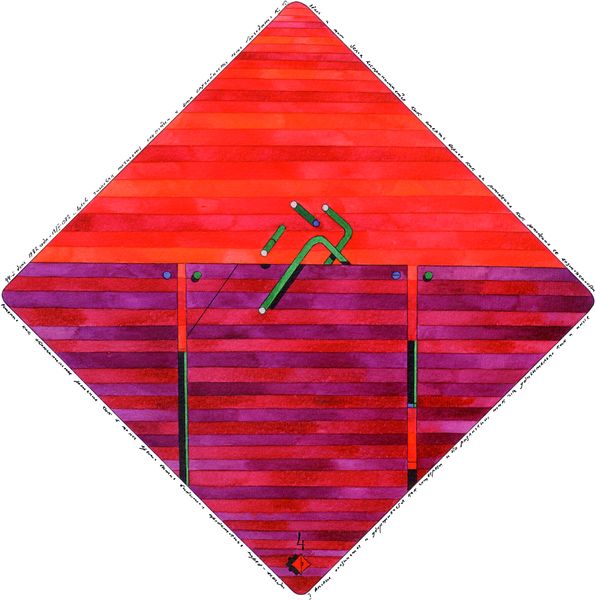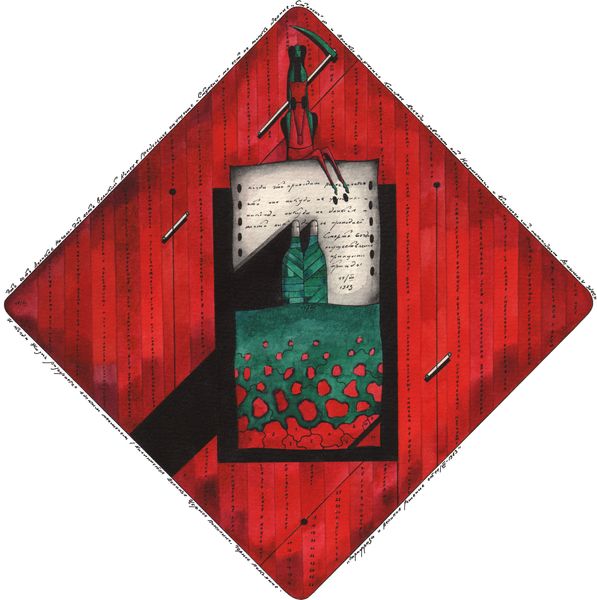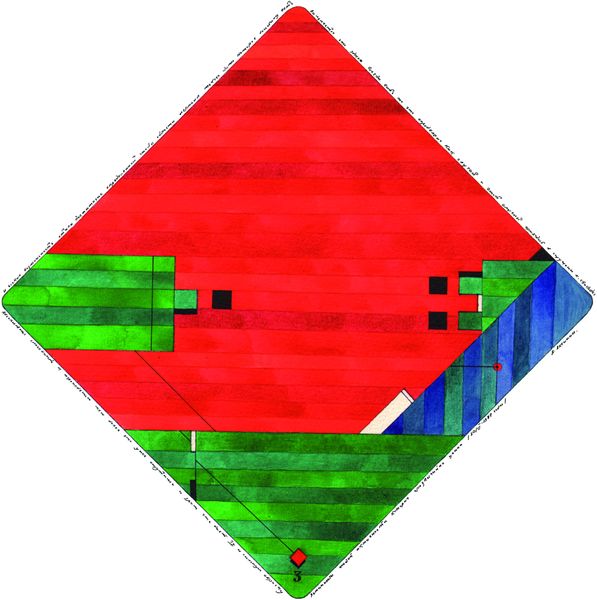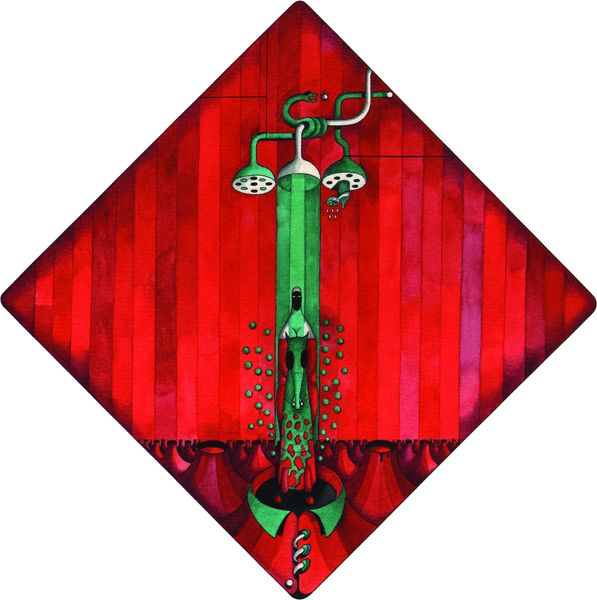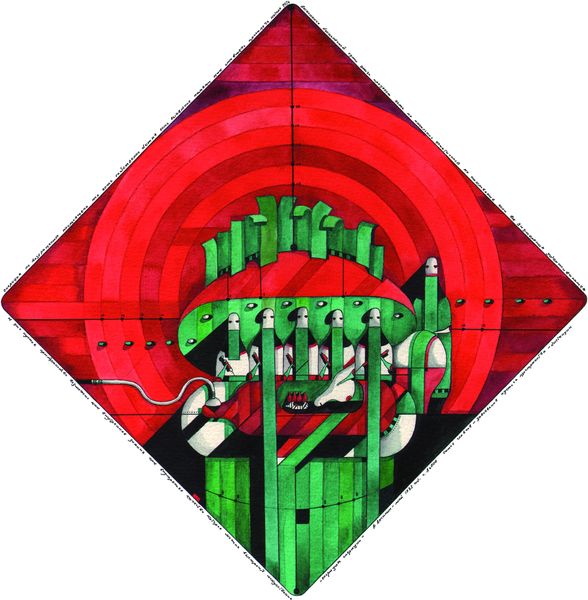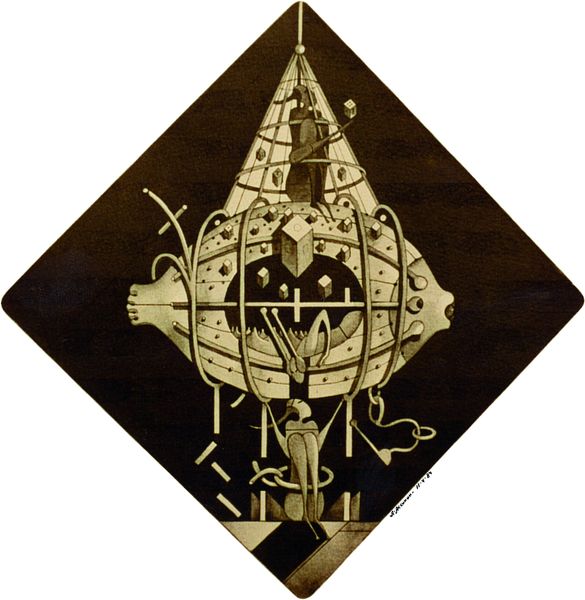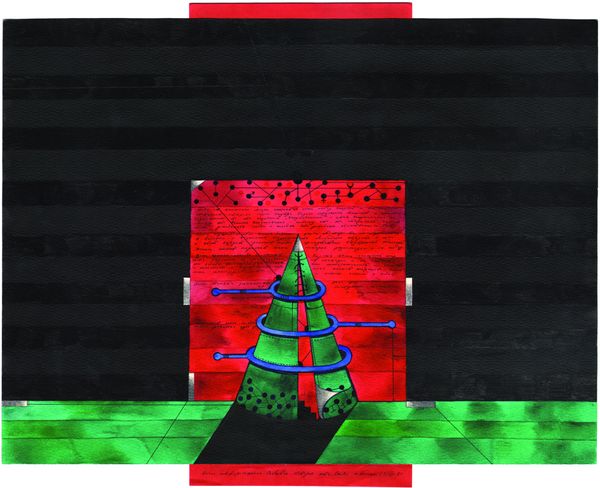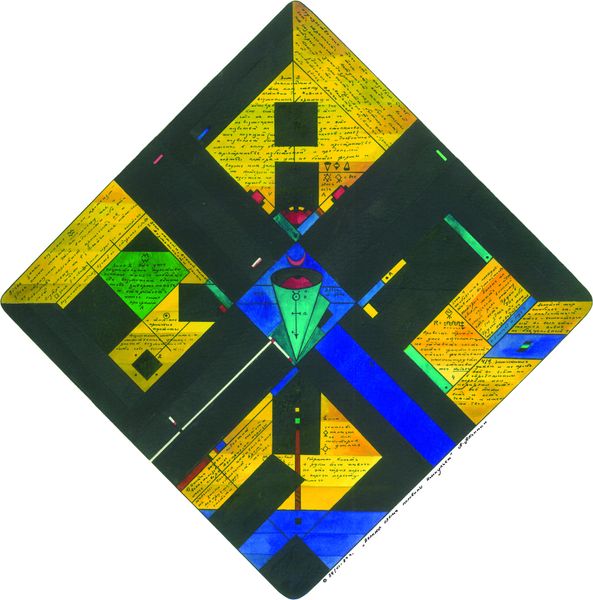
#
geometric composition
#
pop art
#
geometric pattern
#
fractal art
#
abstract pattern
#
minimal pattern
#
flower pattern
#
pattern repetition
#
kaleidoscope
#
motif
Copyright: Oleksandr Aksinin,Fair Use
Editor: This artwork, titled "Harakiri," was created by Oleksandr Aksinin in 1982. It is intensely red and geometrically constructed, and it almost vibrates with tension. What's your read on it? Curator: The historical context is crucial here. Aksinin was working in Soviet Ukraine during a period of intense censorship. How might this socio-political climate shape our interpretation? Editor: It's got to add a layer of subtext. Is the "harakiri" a metaphor for self-destruction under a repressive regime? Curator: Precisely. The stark red, almost like blood, combined with the geometric rigidity, speaks to the violence imposed on the individual by the state. Notice the text around the perimeter – what language is it? Does it offer any further insight into the artist’s mindset? Editor: It looks like Cyrillic. Perhaps a quote or a personal reflection hidden in plain sight, evading the censors through abstraction. The bottle seems to be in the middle of being cut. It is definitely symbolic. Curator: The bottle, presented in the central point, in a moment of destruction can be considered the fragile nature of creativity under duress. But doesn’t it strike you how reminiscent this is of pop art? Warhol’s screen-printed soup cans? What does this evoke in terms of cultural dissemination? Editor: I see it. So, this could be read as a subtle commentary on both Soviet oppression *and* the global reach of Western consumer culture? A sort of double bind? Curator: Exactly. And think about how the museum or gallery *displays* this work now. Does it amplify its message of resistance? Or does it perhaps unintentionally sanitize it, stripping it of its original political charge? Editor: Wow, I hadn't thought of that. The act of displaying it in the West changes its meaning in some ways. Thank you for broadening my interpretation of this piece. Curator: Absolutely. It's a powerful reminder that art is never created in a vacuum and never received neutrally. Considering its place in cultural history offers fresh interpretations.
Comments
No comments
Be the first to comment and join the conversation on the ultimate creative platform.
